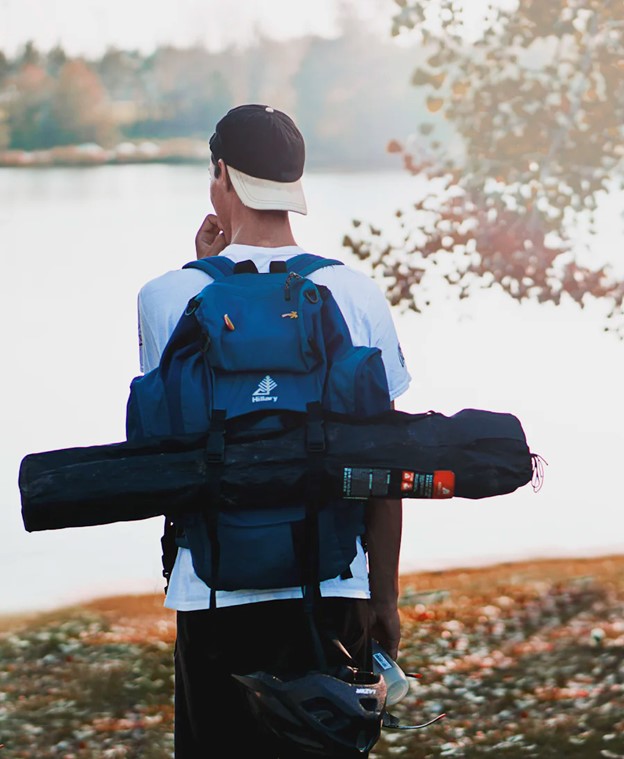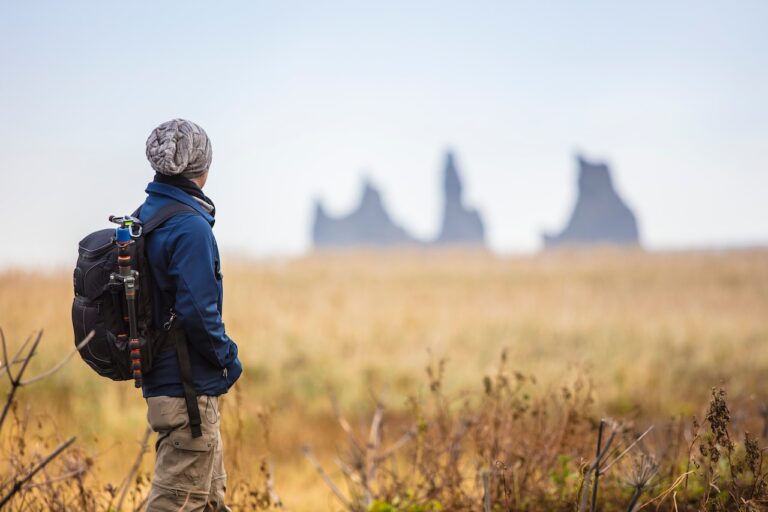How to Pack a Tent For Backpacking [Ultimate Pro Guide 2025]


Learn about How to Pack a Tent for Backpacking. Discover how to maximize your backpack’s space and minimize its weight using the following essential techniques and gear recommendations.
Even for a short trip, don’t forget your travel insurance !
Need to learn basic stretching for your long travel, international flight backpacking journey or camping trip ? Or for your Hike ? Check my full guide of the best travel stretches HERE

The backpacking lifestyle encompasses adventure, self-discovery, and exploration more than just a mode of travel. The essence of backpacking is to travel light, often on foot, with as few belongings as possible packed in your backpack. There is something special about backpacking, whether you are trekking through remote wilderness trails, traveling between vibrant cities, or participating in a pilgrimage.
The experience fosters spontaneity, resilience, and an appreciation for the world around us. A backpacking adventure is more than just reaching a destination; it is about embracing the journey and all the experiences, lessons, and memories that will be gathered along the way.
Check our best inspiring quotes about backpacking HERE

PLAN OF THE ARTICLE :
How to Pack a Tent for Backpacking?
The most important while packing a tent . Full process and tips
FAQ’S : frequently asked questions

How to Pack a Tent for Backpacking?
A tent is like a cozy little home that can be carried on your back when you go backpacking. The following is a guide for packing a tent while backpacking:
1. Place tent components – Gather all the parts of the tent including the main tent, rain fly, ground cloth, tent pegs, and any additional components.
2. Heaviest items – Pack the heaviest items first. This usually includes the tent body and rain fly.
3. Compression bag – Consider using a compression bag for the tent fabric to reduce its size.
4. Best place – The best place to pack the tent is at the bottom of your pack, close to your body weight. This helps maintain balance and stability.
5. Secure knot – Use compression straps to secure the rolled tent and keep it compact.
6. Rest of your gear – Place the rest of your gear on top of the tent to utilize extra space efficiently.
7. Exterior of your backpack – If there’s still extra space, you can attach the tent bag or rain fly to the exterior of your backpack using the compression straps.
8. Right tent – Make sure you have the right tent for your needs, whether it’s an ultralight tent for long hikes or a larger tent for more comfort.
9. Hip belts – Adjust your hip belts to distribute the weight of your backpack evenly on top of your hips.
10. Top of the backpack – Position lighter items towards the top of your backpack to keep the weight balanced.
Wondering about base weight backpacking ? check our full guide HERE

Packing Your Sleeping Bag
A camping trip begins with packing the essentials, and your sleeping bag is one of the most important items. Here are some tips on packing it like a pro:
When rolling up your sleeping bag, begin by laying it flat on the ground and allowing the zipper to remain open.
Squeeze out any excess air as you roll the product tightly from the bottom up. The advantage of this is that your sleeping bag will not only be compact and easy to carry but will also take up less space.

Stuff Sack Strategies
A stuff sack plays an important role in keeping your sleeping bag protected and portable. Here are some tips to maximize its efficiency:
Your sleeping bag should be packed in a stuff sack that is the same size as your stuff sack. If it is stuffed into a sack that is too small, the insulation will be damaged over time.
Protect your sleeping bag from moisture by using a waterproof stuff sack. This will help you to enjoy a comfortable and dry night’s sleep.

Managing Tent Poles
A tent pole is essential for setting up your shelter, however, they can be difficult to transport. The following steps can be taken to streamline the process:
A tent pole bag will help you to organize and transport your poles efficiently.
Pack your tent poles together with your sleeping bag in your backpack if you’re short on space.
Tackling Heavy Items
When you travel with heavy gear, you will feel the weight, but with the right strategy, you will be able to carry less:
The weight of heavier items, such as cookware and food, should be distributed evenly in your backpack by placing them close to your back and centered.
The effect of this is to help you maintain your balance during long hikes as well as reduce the strain on your shoulders and back.


Keeping Your Gear Dry
The weather can hinder your camping experience, but packing properly can assist in keeping your equipment dry:
You should store your sleeping bag and other essentials in waterproof compression bags or dry sacks to prevent them from becoming damp during the trip.
You should also line the inside of your backpack with a rain cover or garbage bag to protect yourself against unexpected rain.
Side Pocket Strategy
The side pockets can be used to store items that may be needed quickly during a hike or at camp. The bags may not be ideal for storing the entire tent setup, but they are great for storing smaller tent accessories such as stakes and guy lines.
You will be able to easily retrieve the items you need without having to search through your main pack.

Top Placement Tactics
There is a great deal of real estate at the top of your backpack that can be utilized for lightweight and less bulky items. It may be beneficial to store your tent’s rainfly or footprint in a compression sack and secure it to the top of your pack.
You can keep these components easy to access and free up space inside your main compartment for heavier gear.
Spare Clothing Solutions
A spare layer of clothing, such as a fleece jacket or raincoat, can also be stored in side pockets or on the top of your backpack. This prevents them from taking up valuable space within your backpack and allows you to quickly adjust your layers as the weather changes.
Need some compact camping instant coffee ? Please find our full guide about the best instant coffee for backpacking HERE


The most important while packing a tent . Full process and tips
Tents should be packed in the following order of importance:
1. Bottom of the Backpack
You should always use the bottom of your backpack to carry heavy and bulky items such as your tent. The tent is placed at the bottom to create a stable foundation and distribute weight evenly.
The center of gravity of the body is also kept low, which enhances balance and stability while hiking. The use of a compression sack will minimize the tent’s size and enhance its efficiency in terms of space utilization.
2. Bottom of the Pack
Your tent should be secured at the bottom of your pack for many reasons, including easy access as well as weight distribution. A tent placed at the bottom of the container provides a cushioning layer that prevents delicate components from being damaged.
The tent should also be equipped with other essentials, such as a sleeping pad and spare clothing, to maximize efficiency and organization.
3. Main Thing
Backpacking trips require a lot of gear, and a tent is one of the most important items. You should devote adequate time and attention to ensuring the package is packed correctly and securely. Tents should be treated as priority items to minimize the risk of forgetting or neglecting essential equipment, improving the overall camping experience.
Water Bottles: Backpacking adventures require keeping hydrated, which makes water bottles essential items. Water bottles should be stored in exterior pockets or designated compartments of your tent for easy access when packing them. You should ensure that they are securely fastened to prevent leaks and spills inside your pack.
Sleeping Pad: Backpacking trips become more enjoyable when you have a comfortable, warm sleeping pad to prevent cold temperatures from affecting your sleep. The sleeping pad should be placed alongside the backpack’s back panel when packing your tent. It is recommended that you use straps or bungee cords to keep it in place and avoid it shifting during the hike.

4. Internal Frame Backpack
A backpack with an internal frame provides excellent structural support and provides efficient weight distribution, making it an ideal choice for backpacking expeditions.
Use the tent frame’s internal structure to secure and stabilize bulky items such as tent stakes and poles when packing your tent. On long hikes, ensure that your weight is distributed evenly to minimize the strain on your shoulders and back.

5. Dry Stuff
A successful backpacking trip requires you to protect your gear from moisture, especially when the weather is unpredictable. You should prioritize dry items such as clothing, sleeping bags, and electronics when packing your tent.
It is recommended that sensitive items be protected from rain, condensation, and accidental spills by using waterproof stuff sacks or compression bags.
6. Ultralight Backpackers
Backpackers who prioritize ultralight packing minimize their weight without sacrificing necessary gear or comfort.
You should choose lightweight materials and compact designs when packing your tent to reduce the amount of weight you have to carry. A bivy sack or hammock may be an alternative shelter option for ultralight backpacking excursions.
7. Tent Peg Bag
Tent peg bags make it easier to organize and access necessary accessories such as stakes and guylines.
You should store your tent’s peg bag in an exterior pocket or attach it to the outside of your backpack for convenience when packing your tent. The bag should be securely fastened to prevent damage or loss while hiking.
8. Water Bladder
You can easily hydrate on the trail with a water bladder, allowing you to stay refreshed without having to stop to retrieve a water bottle every couple of hours.
Pack your tent with your water bladder integrated into the hydration system of your backpack for easy access. Maintain the proper temperature of the water by ensuring that the bladder is properly sealed and insulated.
9. Zip Lock Bag
A zip lock bag is an ideal storage solution for organizing small items as well as protecting them from moisture and debris.
Zip-lock bags can be used to store tent accessories such as repair patches, spare parts, and toiletries when packing your tent. The bags should be labeled so that they can be easily identified and retrieved when necessary.
Planning for a world trip or a long backpacking trip ? Check our ultimate Long trip packing list HERE
Wondering on how to pack your full backpack ? check our guide HERE

Tips for Tent Maintenance
The following tips will help you maintain your tent:
Thorough Cleaning: Use a tent cleaner after each camping trip to ensure that the tent is completely clean. Dirt, debris, and stains can be eliminated by using a soft brush or sponge, mild soap, and lukewarm water. The fabric and waterproof coating of your tent may become damaged if you use harsh chemicals or abrasive scrubbers.
Proper Drying: The proper drying of the tent is crucial for preventing mold, mildew, and odors from forming. It is recommended that you set up your tent in a well-ventilated area or under direct sunlight after cleaning. You should make sure that all parts of the tent, including the seams and corners, are completely dry before storing it.
Regular Inspections: After every camping trip, inspect your tent for signs of wear and tear. You should inspect the seams, zippers, and fabric for tears, holes, or weakened areas. Repair tent damage as soon as possible with a tent repair kit to prevent further deterioration.
Weatherproofing Maintenance: The waterproof coating on your tent may degrade over time, reducing its effectiveness. The waterproofing and seam seals of the tent should be periodically inspected, and waterproofing treatments or seam sealers should be reapplied as necessary. This will ensure the tent’s ability to repel water during rainy weather and keep you dry.
Do you want to bring a camping knife with you ? check our full guide about the best ultra lights backpacking knives HERE
Need to cut some wood ? Why not buying a camping hatchet ? Find our full guide for the best hatchet HERE

FAQs
What is the best way to fold or roll the tent for packing?
The most appropriate method for your tent will be determined by its type and size. The folding method is generally suitable for smaller tents, whereas the rolling method is best suited to larger tents. You should be careful not to crease the fabric too much to preserve its integrity.
Should I pack the rainfly and tent body together?
When packing them, it is generally best to keep them separate. The tent body should be placed in one stuff sack, while the rainfly and poles should be placed in another. This will help to distribute the weight of the tent evenly in your backpack and prevent tangles from occurring.
Should I practice setting up my tent before my backpacking trip?
Yes, absolutely! When you are out in the field, familiarizing yourself with the setup process can save you a great deal of frustration and time. You will also be able to address any issues or missing pieces before the job begins.
Is it OK to pack a wet tent?
Mold and mildew are gradually accumulated throughout a tent’s fabric when it is packed away while it is still wet. There can be a variety of problems associated with this, including the degradation of the fabric and the production of unpleasant odors.

Conclusion
A backpacker should master the art of packing a tent. You will be able to ensure that your tent remains a reliable refuge on every adventure by adhering to these guidelines and incorporating efficient techniques into your routine.

WHO AM I ?
Hello !
I am Eric, a French Australian citizen based between Australia, Asia and Bali an I love to travel and experience the world. I generally like outdoor activities, wellness, great food and venues , party and real local adventures ! I am a Yoga practitioner and fitness lover
I created this blog because I love to travel and I want to share my experiences with others. I’ve been traveling since I was a child, and I’ve been to over 50 countries. I’ve seen some amazing things and met some amazing people, and I want to help others experience the same things.
I believe that travel is one of the best ways to learn about the world and about yourself. When you travel, you’re forced to step outside of your comfort zone and experience new things. You learn about different cultures, different religions, and different ways of life. You also learn about yourself, your strengths, and your weaknesses.
Travel can also be a great way to make new friends. When you’re traveling, you’re surrounded by people from all over the world, and you’re all in the same boat. You’re all there to explore and experience new things, and that can create a bond between people.

Uyuni Salar, Boliva
Let’s connect together !
I hope that my travel blog will inspire others to travel and to see the world. I also hope that it will help people to learn about different cultures and to become more open-minded.

Taj Mahal, Agra, India

![Can You Take a Razor on a Plane? [Pro Travel Tips 2025]](https://funkyfreshtravels.com/wp-content/uploads/2024/07/istockphoto-680068744-612x612-1.jpg)
![Base Weight Backpacking: All You Need to Know and Do [2025]](https://funkyfreshtravels.com/wp-content/uploads/2024/05/Picture1-20.jpg)

![Can We Take a Laptop on a Plane? [Pro Traveler Guide 2025]](https://funkyfreshtravels.com/wp-content/uploads/2024/07/istockphoto-930716440-612x612-1.jpg)

![Best Inspiring Backpacking Quotes for Adventurers [2025]](https://funkyfreshtravels.com/wp-content/uploads/2024/05/Picture1-19.jpg)